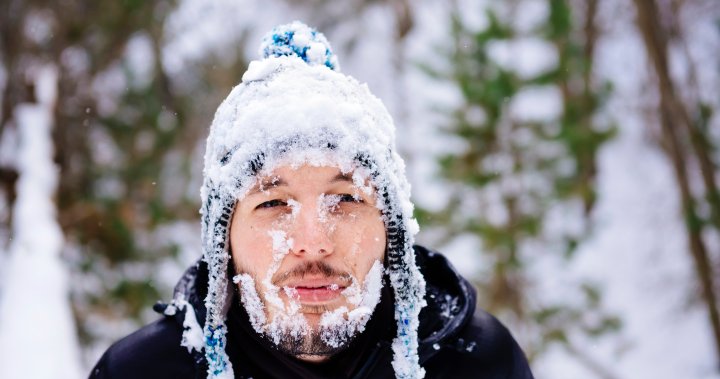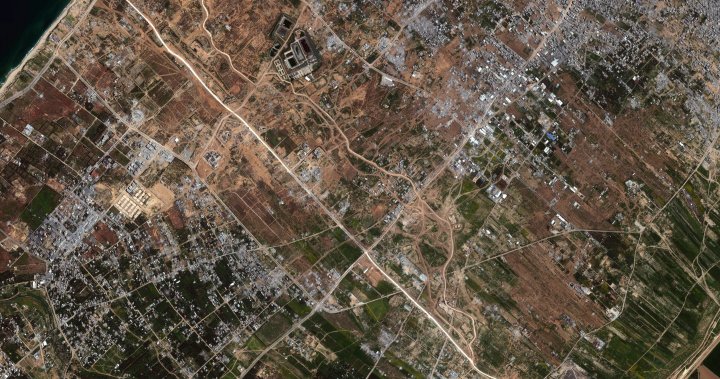Frostbite is becoming a real threat across parts of Canada as extreme cold grips the regions, forcing people to bundle up in heavy layers and limit time outdoors to avoid the bone-chilling temperatures.
Although the definition of extreme cold varies across Canada depending on the local climate, Health Canada warns that any significant drop below normal temperatures can make staying safe and warm a serious challenge.
“In general, your risk of health effects like windburn and frostbite increases at wind chill values below -27 C,” Health Canada stated on its website.
Even if the temperature isn’t dipping into the -20 C range, the wind can make it feel much colder. The wind chill index, which measures how cold it feels on exposed skin based on wind speed, can cause your body to lose heat faster and your skin to freeze in a matter of minutes, Health Canada warned.
This is when the risk of frostbite skyrockets. It can develop within minutes on exposed skin, especially in windy conditions.

When the temperature drops below 0 C, blood vessels close to the skin constrict to protect core body temperature, Health Canada said. When your body is exposed to the cold for an extended period, blood flow to your hands, feet, nose and ears can be severely restricted.
In its early stages, frostbite causes cold, numb skin and a tingling or prickling sensation, the health agency said.
Mild frostbite (frostnip) makes your skin look yellowish or white but it is still soft to the touch. Your skin might turn red during the warming process, but normal colour returns once the area is warmed.
As it progresses, the affected skin may become hard, pale, or blistered.
Severe frostbite can cause permanent damage to body tissue if it is not treated immediately, Health Canada warned. Nerve damage occurs and frostbitten skin becomes discoloured and turns black and after some time, nerve damage becomes so severe that you will lose feeling in the affected area and blisters will occur.
If the skin is broken and becomes infected, gangrene can set in, which can result in loss of limbs.

When is frostbite a risk?
The Quebec government uses the following guideline showing frostbite risk levels to the wind chill index:
- Wind chill index: 0 C to -9 C (Risk of frostbite: Low. Windchill may cause a bit of discomfort)
- Wind chill index: -10 C to -27 C (Risk of frostbite: Low. Wind chill may cause discomfort)
- Wind chill index: -28 C to -39 C (Risk of frostbite: Moderate. Skin exposed to the cold can freeze within ten to 30 minutes (or faster, if the wind is strong))
- Wind chill index: -40 C to -47 C (Risk of frostbite: High. Skin exposed to the cold can freeze within five to ten minutes (or faster, if the wind is strong))
- Wind chill index: -48 C to -54 C (Risk of frostbite: High. Skin exposed to the cold can freeze within two to five minutes (or faster, if the wind is strong))
- Wind chill index: -55 C and lower (Risk of frostbite: Extremely high. Skin exposed to the cold can freeze in less than two minutes)
Who is at risk of frostbite?
While anyone improperly dressed is at risk in cold weather conditions, some are at greater risk than others for frostbite, Health Canada warned.
This includes:

Get weekly health news
Receive the latest medical news and health information delivered to you every Sunday.
- People experiencing homelessness.
- People working outdoors.
- People living in homes that are poorly insulated (with no heat or no power).
- People with certain medical conditions such as diabetes, peripheral neuropathy and diseases affecting the blood vessels.
- People taking certain medications including beta-blockers.
- Winter sports enthusiasts.
- Infants who are one year old or younger.
- Seniors who are 65 years or older.

What to do if you get frostbite?
Frostnip is the initial stage of frostbite, where no permanent damage occurs to the skin.
It can be treated by rewarming the affected area, removing tight jewelry or clothing, placing cold fingers in your armpits or warming a cold nose or cheek with the palm of your hand, according to the City of Toronto. Rubbing or massaging the area should be avoided.
Frostbite happens when skin and other tissues freeze and die because blood and oxygen can no longer circulate. Because of this, it requires immediate medical attention.
The City of Toronto said if you think you have frostbite, get immediate emergency medical attention. While waiting for medical help you can:
- Find warm shelter and remove wet clothes.
- If you can get out of the cold until medical attention is available, you can begin to warm the affected area by:
- Immersing the affected area in warm but not hot water (the temperature should be comfortable to the touch for unaffected parts of the body).
- Warm the affected area using body heat (for example, the heat of an armpit can be used to warm frostbitten fingers).
- If a warm shelter is not available and there is a possibility that the skin will refreeze, do not try to warm frostbitten skin.
- Do not rub the frostbitten area with snow or massage it (this can cause more damage).
- Do not walk on frostbitten feet or toes, if possible.
- Do not use a heating pad, heat lamp or the heat of a stove, fireplace or radiator for warming (since frostbite makes an area numb, you could burn it).

Wearing warm clothing on extremely cold days is the first step in reducing your risk of frostbite, Health Canada said.
Synthetic and wool fabrics are great for insulation, and some synthetic materials even pull moisture away from your skin, keeping you dry and lowering your risk even more. It’s also a good idea to dress in layers, with a wind-resistant outer layer. You can always adjust — take off a layer if you get too warm (but before you start sweating) or add one if you feel chilly, the health agency added.
Make sure to cover exposed skin with warm gloves, hats, scarves and face masks to protect vulnerable areas like fingers, toes, ears and the nose.
To stay safe, try to limit your time in the cold by staying indoors during extreme weather. If you do need to be outside, take regular breaks in a warm place. Staying active helps boost circulation, which can reduce your risk.
Also, keep an eye on your skin for any signs of numbness, tingling, or discoloration, especially on exposed areas. If you notice any of these, get warm right away.
© 2025 Global News, a division of Corus Entertainment Inc.





